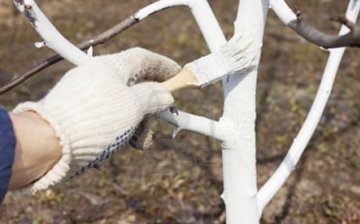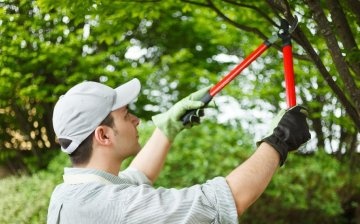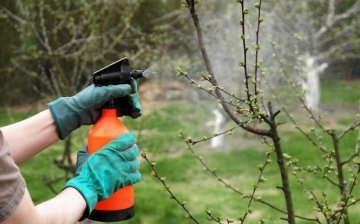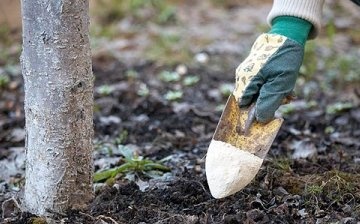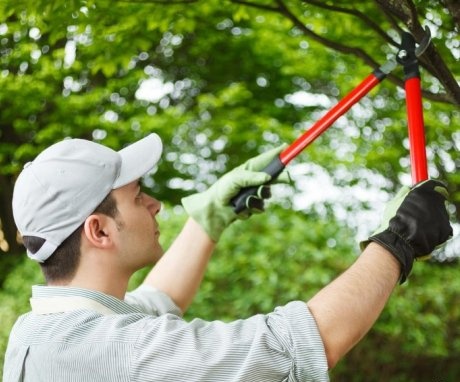Processing fruit trees in spring: care, pest control and feeding
It is customary to refer to fruit trees, the fruits of which are used in food or the food industry. In the gardens of different regions, there are apple, pear, plum, cherry, sweet cherry and other representatives of trees of all sorts and types. An orchard, laid out in a summer cottage or near a house, will perfectly decorate the landscape and delight you with spring flowering. This is a place where you can not only eat tasty and healthy fruit, but also relax in the shade of dense foliage.
Fruit trees also grow in the wild. These include hawthorn, wild pear and cherry. Basically, in nature, the fruits of such trees are small and have a sweet and sour taste. Thanks to selection and good care at home, you can grow fruits of a fairly large size with a pleasant aroma and taste.
Content:
- Fruit tree care
- How to protect fruit trees from disease and insects
- Fertilizing fruit trees
Fruit tree care
Before planting seedlings of fruit trees, it is necessary to find a place for their growth. Combine and lay out garden designs and find the right neighbors.
To choose a good seedling, you must follow a few simple rules:
- The tree should be 1-2 years old. Such a plant will begin to bear fruit as early as 2 or 3 years. Older seedlings bear fruit the next year, but they are more expensive and take root worse.
- The main criterion for the selection of already fruiting seedlings is its correct extraction from the previous place of growth. The roots should not be severely damaged and should be in a large, earthy coma.
- Further, in young seedlings, the diameter of the stem is measured at a distance of 5 cm from the grafting. Its size should be about 2 cm. Such a plant will have a good strong trunk, and bring a rich harvest.
- One-year-old seedlings should not have branches, two-year-old no more than 2-3 small branches. The root system must be strong and healthy.
Basic tree care includes timely watering, spring and autumn processing from diseases and pests, pruning and fertilization and dressing. Trees are watered mainly in the spring with fertilization and during periods of very dry summers.
Basically, adult fruit-bearing trees do not need additional moisture, since the root system goes deep underground and feeds from there. Fruit trees are cultivated in early spring, before the flowers appear. In the fall, after harvesting the fruits and falling foliage.
Pruning fruit trees in spring:
- Pruning of trees is done in early spring, before spraying, when the plant has not yet woken up.
- In warm regions, where trees wake up earlier, pruning is carried out in the month of February.
- During pruning, diseased and dry branches are removed, as well as those branches that are infected with pests.
- The crown is forming depending on the type and variety of the plant.
- For old trees and those who have begun to bear fruit poorly, rejuvenating pruning is performed. To do this, the old branches are shortened so that the young ones go into strong growth. Such pruning can be done once every 4 years.
If the garden is neglected, then it is necessary to carry out sanitary pruning. On dense trees, the fruit will be small and weak. Therefore, first of all, the tree should be cleaned of unnecessary branches. Broken, dry and diseased branches are cut first. Further, the center of the crown of the tree is cleaned, 3-5 strong young branches are left. The upper part of the crown is trimmed, and the main branches are directed to the sides. In the first year after pruning, the tree will recuperate and may not bring the long-awaited harvest. But after a year, the plant will delight the owner with tasty, juicy and large fruits.
The introduction of mineral and organic fertilizers is very important for the proper growth and development of the plant.
This process is carried out in spring and autumn. Potassium, phosphorus, magnesium, nitrogen - must be added to the soil, as these elements are often lacking. They are introduced with a lot of water. Nitrogenous fertilizers in the spring, and phosphorus and potassium in the fall, before wintering.
Young seedlings need winter protection from frost and wild animals. Therefore, for the winter, small fences are often built around trees up to 5 years old and wrapped in cardboard. This protects the thin trunk from severe frosts and the bark from rodents. In warm regions, trees are not insulated.
How to protect fruit trees from disease and insects
In early spring, all gardeners go out to spray fruit trees. This process is carried out in order to prevent diseases and infections that can destroy the tree. Also, a disinfection procedure is carried out against insects that live in the bark of trees and can harm both the plant itself and the fruits. The optimum ambient temperature for spraying is from +8 to +10 degrees.
Trees need to be prepared for processing:
- To do this, the gardener must inspect all trunks and trees for the presence of diseases and lichens, the latter must be removed.
- The attacking leaves under the tree and at its trunk should be removed so that during processing the preparations also fall on the soil, in which many harmful insects also winter.
- In order not to harm the environment and your own health, it is recommended treat trees with non-chemical preparations, but biological. The latter are widely represented on the market and new ones appear every year.
- Also, processing is carried out before flowering, so as not to harm the bees and not to saturate future fruits with harmful substances.
The chemicals used to treat trees in spring are as follows:
- Inkstone. This drug not only protects the plant, but also nourishes it with iron. The whole tree and the ground around it are cultivated. Iron vitriol protects against many diseases, pests and fungi. Processing is carried out in the spring before bud break and in the fall. If premature yellowing of the leaves and drying of young shoots are observed on the tree, this indicates a lack of iron in the plant. Treatment with iron sulfate is carried out throughout the entire area, trees, shrubs and soil around the roots are sprayed. The substance is diluted in proportions of 50 grams per 10 liters of water.
- Bordeaux liquid. It is an inexpensive but very effective drug. It saves plants from scab, fruit rot, rust, late blight and many other diseases. Its disadvantage is that it is not stored in solution. Therefore, all of it must be used on the same day when the solution is prepared. A certain amount of solution is needed for different types of plants, an excess will lead to unpleasant consequences. For trees that have not reached 5 years of age, they spend up to 2 liters of Bordeaux liquid per tree, for fruit-bearing adults - 10 liters. Currants and gooseberries are treated with 1–1.5 liters of solution per plant. And 10 bushes of raspberries will need 2 liters. The grapes are processed at the rate of 1.5 liters per 10 square meters. Spraying is carried out in two stages.The first is carried out in the spring when the buds open, the second, with a lighter solution, before the buds open.
- Abiga-Peak is used as an antifungal and antibacterial agent for almost all plants in the garden and vegetable garden. It cannot be mixed with other drugs, since the copper contained in Abiga-Peak reacts and precipitates.
When processing fruit trees it is necessary to process the entire area. Since diseases and pests can easily migrate from a diseased tree to a healthy one. Therefore, it is necessary to spray trees, bushes, soil around plants and even a fence. The solutions are prepared carefully and carefully, while mixing must be thorough.
Otherwise, part of the plant will be treated with a light solution, and the other part will receive burns from strong concentration. This can lead to the death of the entire tree or bush. During the spraying process, the container with the solution is also shaken regularly to constantly mix the liquid.
Treatment must be carried out with gloves and a protective suit, since these preparations are useful for trees, but have a detrimental effect on human health.
It is also worth spraying in dry weather, in the morning, after the dew has melted. The drugs should be on the tree for a couple of days, and moisture can wash it off, and the result will be minimal. Spraying is carried out at a distance of 75–80 cm from the plant in calm weather.
Fertilizing fruit trees
The soil does not contain a sufficient amount of organic and mineral substances, and in places where trees have been growing for more than 1 year, it is depleted. Therefore, it is recommended annually feed trees in the spring... Nitrogen is needed for good tree growth and strong branches. It is with such an element that fertilizers are applied in early spring to the soil under the plant.
The tree in the process of development absorbs many substances, micro and macro elements. These are hydrogen, carbon, oxygen, calcium, phosphorus, iron, manganese, copper, boron. They are found in sufficient quantities in soil, water and the environment. And such elements as phosphorus, nitrogen, potassium can be in the ground under the tree in minimal amounts and the plant, experiencing a shortage, looks weak and sick.
Top dressing and fertilizers are introduced during the period when the fruit tree is actively growing - these are the spring months.
Since wood absorbs almost all micro and macro elements with water, it is watered abundantly after adding substances. An oversupply of fertilizer or applying it in the wrong period also entails negative consequences. For example, if nitrogen is added later than the term, young branches may not ripen by winter and freeze in the cold season.
With the help of potassium, trees and plants synthesize sugar. Therefore, fertilizers containing this element are especially important for fruit trees. Potassium also enhances drought resistance and frost resistance of the plant. They are introduced as an aqueous solution, after which the plant is watered abundantly. Also, in the spring, humus and compost can be added under the plant to enrich the soil with organic matter.
Proper care of the tree, its timely protection and feeding will allow you to enjoy the fruits for a long time. The trees are perennial and some of them can grow for more than 30 years. The garden is a small forest where the whole family can relax.
More information on processing fruit trees in spring can be found in the video.



